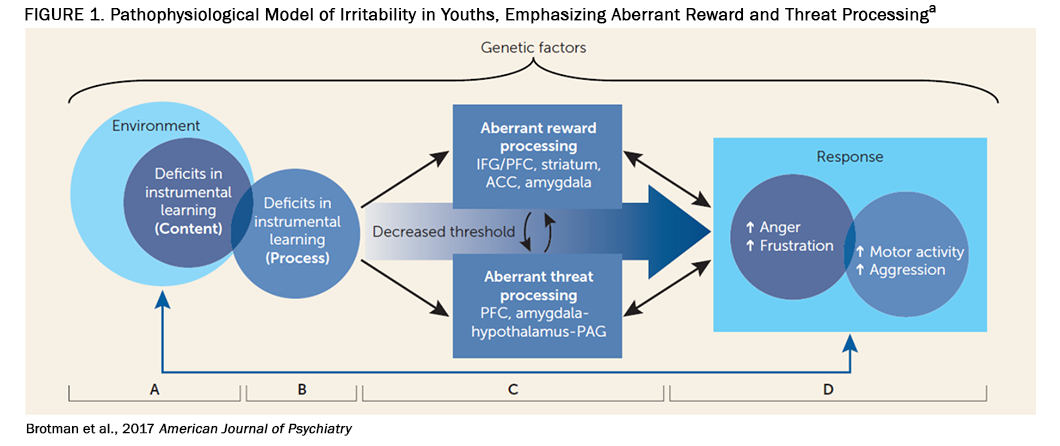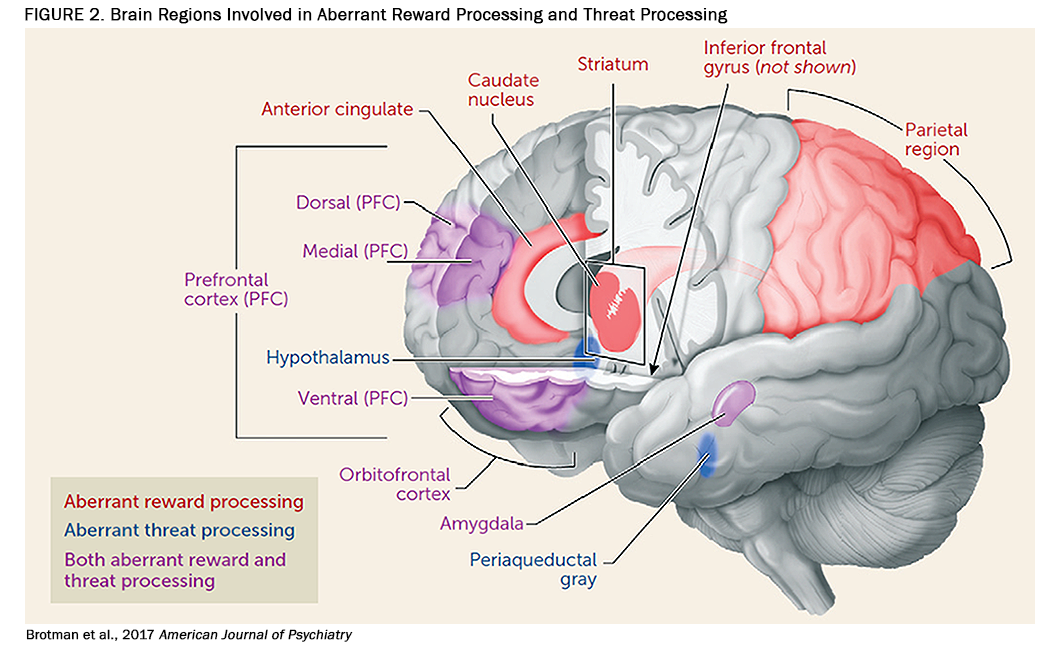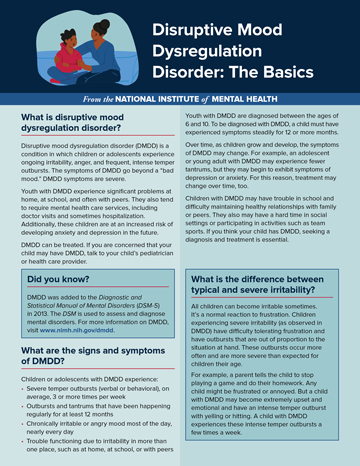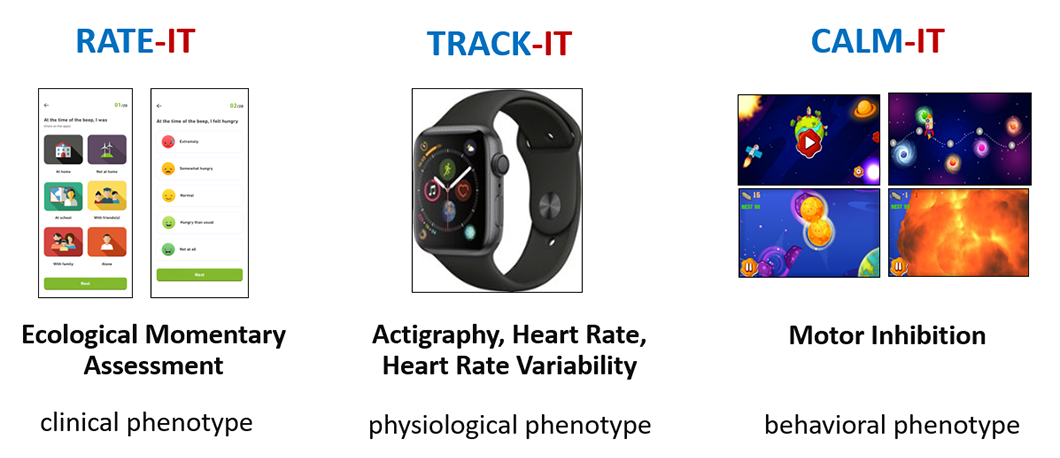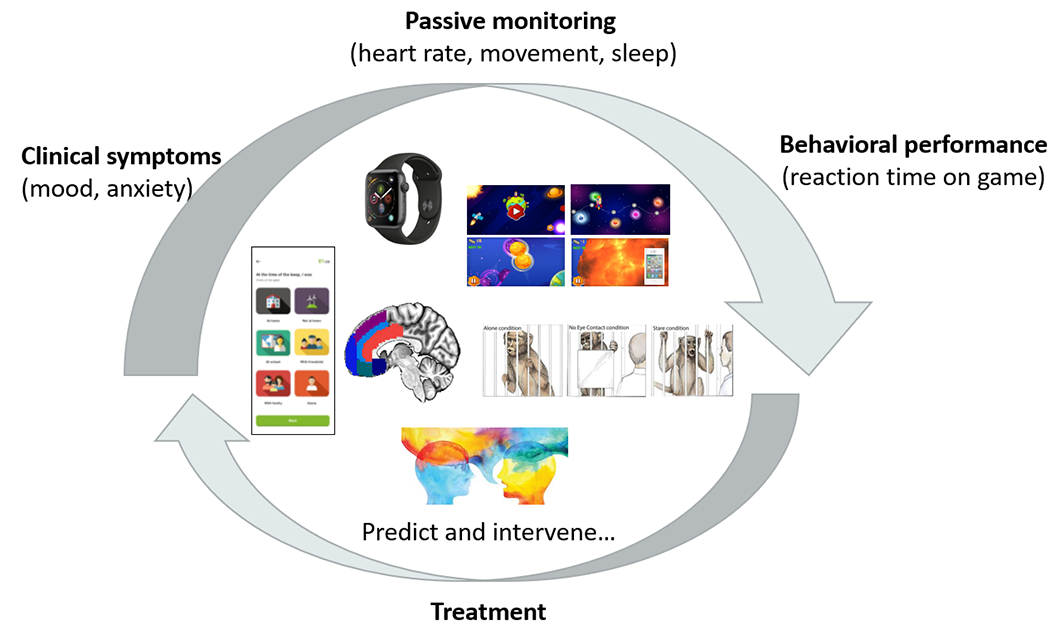Neuroscience and Novel Therapeutics Unit (NNT)
The goal of the Neuroscience and Novel Therapeutics Unit (NNT), led by Melissa A. Brotman, PhD, is to develop brain-based treatments for children with serious psychiatric disorders. The research conducted in NNT is part of NIMH’s mission to transform the understanding and treatment of mental illnesses through basic and clinical research, paving the way for prevention, recovery, and cure.
NNT’s Public Health Impact
Mental illness has a tremendous impact on public health. Many psychiatric disorders first present during childhood. Irritability and anxiety are among the most common clinical problems in children.
NNT aims to:
(1) use neuroscience to identify treatment targets; and
(2) develop innovative and scalable therapies based on the ability to engage these targets.
Theoretical Framework
NNT developed a translational neuroscience model of irritability that applies basic neuroscience research to develop new clinical applications and therapies for irritability (Brotman et al., 2017).
Figure 1. Pathophysiological Model of Irritability in Youths, Emphasizing Aberrant Reward and Threat Processing
This model of irritability comes from functional magnetic resonance imaging (fMRI) studies that demonstrate that the neural circuitry underlying responses to threats and rewards come from specific areas of the brain.
Figure 2. Brain Regions Involded in Aberrant Reward Processing and Threat Processing
While this research program currently targets pediatric and adolescent irritability, the lessons we learn in this area will inform complementary translational interventions and approaches for other pediatric conditions.
Future Research
We are beginning to use mobile technology to develop applications to measure symptoms and behaviors.
While early results are promising, additional work is needed to advance treatments and address this profound public health need in youth.
Image 1. Image of future work displays three mobile applications: “RATE-IT,” “TRACK-IT,” and “CALM-IT.”
Image 2. Image of future work displays the goal of monitoring clinical symptoms (for example, mood, anxiety), passive physiology (for example, heart rate, movement, sleep), and behavioral performance (for example, reaction time on a game) to develop treatments.
Contact Information
Melissa A. Brotman, PhD
Chief, Neuroscience and Novel Therapeutics Unit
Emotion and Development Branch
National Institute of Mental Health
9000 Rockville Pike, Building 15K
Bethesda, Maryland 20892
brotmanm@mail.nih.gov
Phone: (301) 435-6645


